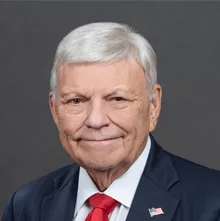As we begin the last month of the first quarter of 2022, WTI (as of this writing) is at $91.35/barrel, Brent is at $ 92.72/barrel, and the Biden administration continues its campaign to limit oil and gas exploration. The administration is preparing to reverse another Trump administration initiative, the developer policy for the Natural Petroleum Reserve in Alaska (NPR-A).
The Bureau of Land Management (BLM) informed a federal court Jan. 10 that it has decided to revert to the Obama administration’s 2013 “integrated activity plan” for the NPR-A. It would mean a more restrictive leasing policy for both oil and gas activity that was contemplated, although never carried out, by the Trump administration’s 2020 plan.
BLM publicly announced its decision on the same day it reported the decision to the U.S. District Court for the District of Alaska. The Alaska delegation to Congress reacted angrily and issued a joint press release.
“With zero analysis or consultation with Alaskans, the Biden administration has decided to upend the NPR-A’s current management plan to return to an outdated plan that is worse for our state’s economy, worse for our nation’s energy security and contrary to federal law,” states Sen. Lisa Murkowski. “Sweeping restrictions like this — which are being imposed even as the Biden administration implores OPEC+ to produce more oil — demonstrates everything that is wrong with its energy policies.”
The Interior Department, including the BLM, still has a range of prospects across the lower 48 states for restrictions on the locations and numbers of exploration opportunities for oil and gas.
The Environmental Protection Agency (EPA) is expected to impose tougher regulations for methane and volatile organic compounds emissions. Industry representatives have tried to convince the agency to see the value of flexibility in emission monitoring methods.
For the renewable fuels mandate, the EPA is not signaling any flexibility. The agency is proposing a blanket rejection of all efforts by small refiners to win hardship exemptions from renewable standards while it increases annual obligations for the use of renewable fuels.
The $2 billion budget bill has been slowed down by its own nature. Most of the arguments over the bill have been concerned with childcare deductions, and state and local tax deductions rather than energy issues.
Even if the bill is slimmed down, it may still include elements that would raise costs for new oil and gas operations on federal lands and, most concerning to the industry, a new fee or tax on methane emissions from any production operation, and a large percentage of transmission, storage and processing operations.
“We have to stop this natural gas tax,” says Mike Sommers, president of the American Petroleum Institute. “There are still negotiations ongoing,” notes Dan Naatz, executive vice president of the Independent Petroleum Association of America (IPAA).
Because the methane fee is on emissions, it is sold as a pollution tax. Lee Fuller, an IPAA official, warned that because there are no easy ways to eliminate the methane emissions, “ultimately, it’s going to be passed on to the consumers.”
LNG Investments Rise
On the brighter side, global oil and gas investments are predicted to hit $628 billion in 2022, led by upstream gas and liquid natural gas (LNG). A significant factor is a 14 percent increase in upstream and LNG investments. This year, these segments will be the fastest growing, jumping to around $148 billion in 2022.
Upstream oil investments are projected to rise 7 percent to $307 billion, while midstream and downstream investments are predicted to fall by approximately 7 percent to $172 billion.
Sanctioning activity is set to rebound in North America, with more than $40 billion worth of projects due for investment decision in 2022. Six LNG projects are expected to receive the green light, five in the United States.
For 2022, Enterprise Products Partners expects growth in capital investments to total approximately $1.5 billion, which does not include one of the company’s largest projects: Seaport Oil Terminal in the Gulf of Mexico. Final government approval is expected to be finalized by this spring.
The facility is designed to load and export up to 2 million barrels a year of crude oil in very large crude carriers via a pipeline that would run from Enterprise’s proposed Oyster Creek Crude Terminal in Freeport, Texas.
According to Shane Mullins, Industrial Info’s vice president of PVF product development: “We still have strong LNG demand fundamentals, especially with the increased volatility in LNG pricing that we’ve seen in Europe, competing for spot LNG in Asia. The record-high spot LNG prices this winter brought buyers back to the table, willing to sign the long-term agreements necessary to finance LNG liquefaction projects.”
More pipelines will be needed to serve facilities engaged in the processing and exporting of LNG. Venture Global LNG’s $75 million East Lateral and $70 million West Lateral pipelines are examples of construction projects required to meet the demand.
Marathon’s full-year income totaled $9.94 billion for 2021, compared to a net loss of $9.83 billion in 2020. The surge in demand for fuel following the COVID-19-related lockdowns accounted for the dramatic turnaround.
The company started its renewable diesel project at its former refinery in Dickinson, N.D. The success of the Dickinson project is encouraging plans for Marathon’s next major renewables project: the $12 billion conversion of its Martinez Refinery near San Francisco, which kicked off in December.
With persistent supply chain and port-of-entry constraints, escalating energy costs, trucker and skilled worker shortages, close contact with your manufacturer/supplier is critical. Regular contact must be maintained to avoid stock outages, unexpected shipping delays and anticipated price increases as we continue into 2022.
With this said, I suggest you consider supporting domestic manufacturers to ensure reliable sources, high-quality products lowering backend installation costs, complete traceability and limited liability exposure.
PVF Roundtable News
The second PVF Roundtable networking meeting of 2022 will be held June 14 at The Bell Tower on 34th in Houston.
The PVF Young Professionals hosted its Sporting Clays Classic on March 3 at the Greater Houston Sports Club. Proceeds from this event will help fund the PVF Roundtable’s mission of giving scholarships monies to students focused on careers in the PVF industry.
The Don Caffe Memorial Golf Tournament is scheduled for June 13 at The Clubs of Kingwood Golf Course in Kingwood, Texas. Another record turnout is expected, so sign up early. The tournament will precede the June 14 networking meeting and is another fundraising event for the scholarship program.
As a board member, and I speak for all members, we thank you for your participation in these events.
The networking meetings are a unique venue for you and your associates to network with your peers in the PVF industry. These events provide the platform to share information, discuss pertinent issues, meet new contacts, develop new and long-lasting friendships and pursue new opportunities in the industry.





